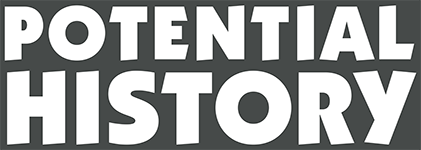Engineering History (2)
Item set
- Title
- Engineering History (2)
- Creator
- Mary J.S. Roth
Items
-
Statement of the first set of college-wide learning outcomes. (Gendebien, p. 186-7)
-
1944: 'The main concerns of the Post-War Program committee, when it started its deliberations, were those of the national academic community at the time: the philosophy and aims of collegiate education, and the decline of liberal education in favor of vocational training
-
'Lafayette was one of thirty-six academic institutions selected by the War Department as training centers for engineering and aviation cadets.' ( Gendebien, p. 165)
-
'In the summer of 1942, the college repeated the Fundamentals of Engineering course for high school graduates, adding a course in elementary engineering drafting for women, along with courses in safety engineering and surveying and map reading.' ( Gendebien, p. 160)
-
1935: The two trustee committees, the Liberal Arts Committee and the Technical Curriculum Committee, were replaced by a Committee on Educational Plans and Policies. (Gendebien, p. 116)
-
1934: 'The experience of these three departments [mathematics, physics and chemistry] is illustrative of the difficulty, perhaps impossibility, of achieving true unity of the arts, science, and engineering
-
1932: The faculty Curriculum Survey Committee in 1932 is charged with 'proposing a coherent, modern curriculum that would establish equity among arts, science, and engineering
-
1932: F19 President Lewis tries to transcend the division between the curricula, 'the president decided to use the newly formed Academic Council as the agency for curricular survey and review.' (Gendebien, p. 87) At this time there were two committees dealing with curricula, the Arts and Science Curriculum Committee and the Engineering Curriculum Committee as well as two trustee committees, the Liberal Arts Committee and the Technical Education Committee.
-
Under the codification of 1915, 'There was no room at the freshman or sophomore level for advanced work in any degree program, nor for any engineering course, in the first two years, in any of the engineering programs.' (Gendebien, p. 85)
-
-- 'Interest in science was further stimulated by the achievements of Dr. Porter W. Shimer,
-
-- 'Early in 1889 Prof. James W. Moore of the Lafayette College Physics Department received permission to arrange, through cooperation of the Edison Company, for the first use of electricity in the college
-
-- 'It was in this year and in the refectory building, that Harrison Woodhull Crosby, assistant steward, instituted the great industry of preserving vegetables and fruit in hermetically sealed tin cans. In September 1847, he made his first experiment. He secured six little tin pails, such as children play with on the seashore. For each of these he prepared a lid and cut a square hole in the centre. He then soldered these lids with the hole in them on the tops of the pails. He stewed tomatoes and put the fleshy parts into these pails, through the hole left in the lid. With a piece of tin larger than the hole he soldered the opening shut. So fresh and delicious were these tomatoes when he opened the pails the following winter, that he determined to preserve a large number of cans in the following year. He packaged a thousand cans. But the product was new and strange. Tomatoes in any form had but recently come into use as human food. He could not sell them. So packing them in boxes containing six cans each, he sent them to newspapers and various famous persons, including Queen Victoria, James K. Polk, then President of the United States, various Senators and Congressmen. Letters of acknowledgment, thanks and astonishment, as well as contemporary newspaper accounts,
-
1837- Basic mining course is offered. (Schaffer et al.)
